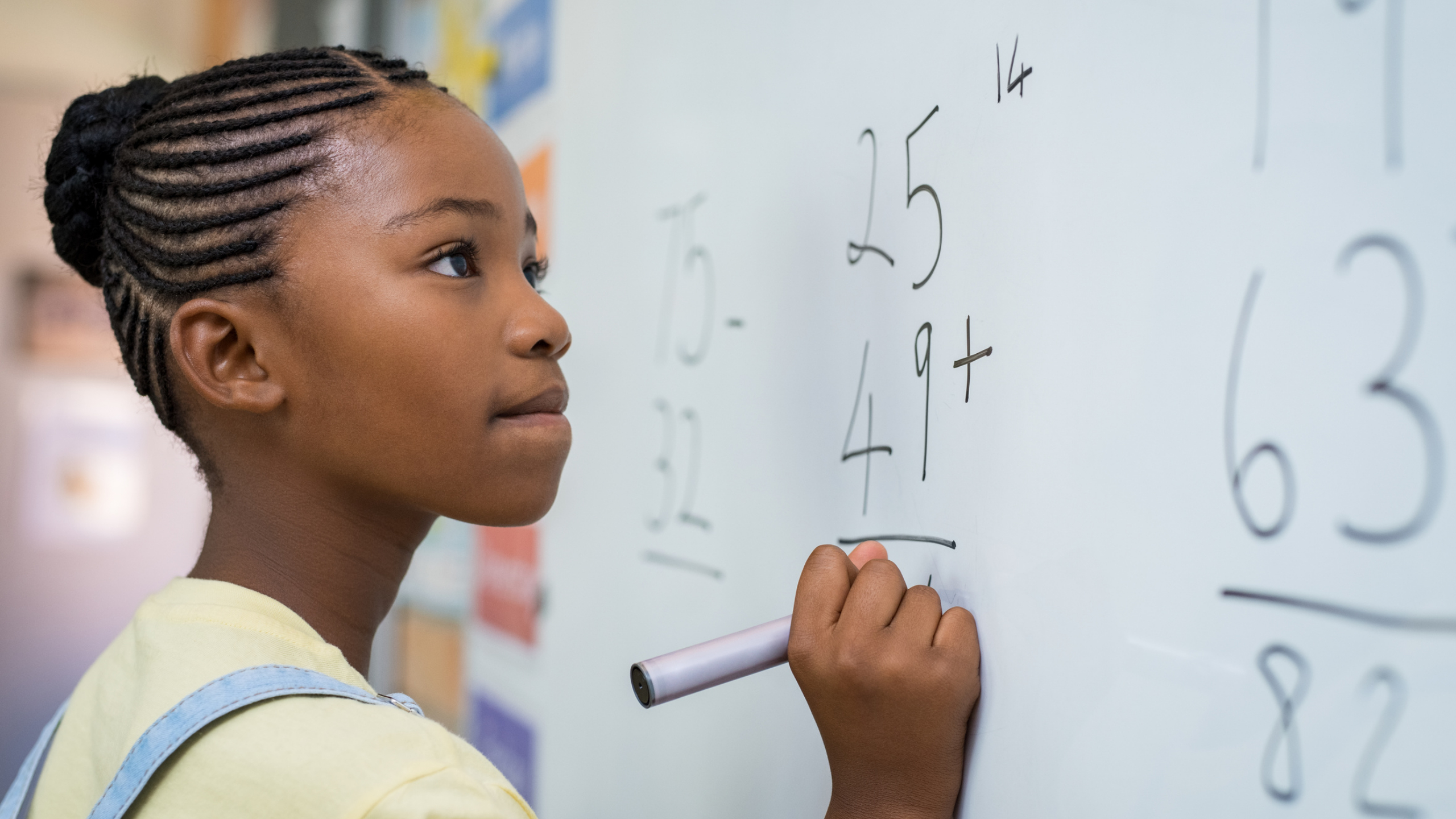Research Spotlight: Christina Areizaga Barbieri

Does providing examples of solutions to math problems improve students' overall performance in math across grade levels?
Christina Areizaga Barbieri, University of Delaware assistant professor, Dana Miller-Cotto of Kent State University and UD doctoral students Sarah N. Clerjuste and Kamal Chawla conducted a meta-analysis of 55 experimental studies and found that studying worked examples—or worked-out solutions to math problems—were moderately effective at improving learners’ mathematics performance when compared to more standard practices such as solving practice problems. In “A Meta-analysis of the Worked Examples Effect on Mathematics Performance,” published in Educational Psychology Review, the authors found that learners in elementary school through adulthood who study worked examples improve their overall math performance by an average of 18 percentile points compared to those who do not. The authors further identified variations of the worked examples effect, finding that worked problem studies using correct solutions yield larger improvements overall than those using incorrect solutions. They also found that studies that pair worked examples with self-explanation prompts—which ask students to explain a strategy or concept displayed in a worked example—lead to lower student performance compared to those using worked examples without self-explanation prompts. This study thus confirms and extends an influential 2007 Institute of Education Sciences (IES) report that claimed, based on a small sample of studies, that there was moderate evidence showing that interleaving worked examples and problem-solving was effective for learning.
Despite the widespread study of worked examples since their origin in 1985, a meta-analysis of the immense amount of research on this topic was not available prior to this study. In their work to quantify the average effect of worked examples on mathematics performance, Barbieri and her team first reviewed 8,033 abstracts to narrow in on a sample of causal studies with random assignment. This process resulted in a sample of 43 articles (41 experimental, 2 quasi-experimental) reporting on 55 studies and 181 effect sizes (with only four articles published before the seminal 2007 IES report). These studies included varying study environments (e.g., laboratory and classroom studies), varying mathematics performance measures (e.g., percent accuracy on a test, number of errors made during problem-solving) and varying modalities (e.g., paper-and-pencil tasks, computerized tutors). While the sample included students from elementary school through post-secondary education, most articles focused on middle school students in algebra or geometry. Barbieri and her team then used robust variance estimation to account for clustered effect sizes and identify how worked examples broadly affected student performance in mathematics.
In their work to assess what moderated the work examples’ effect on student performance, Barbieri and her team chose to focus on the most common modifications of worked problems. They assessed correct vs. incorrect examples alone and in combination with correct examples as well as the pairing of worked examples with self-explanation prompts. In addition, the team assessed the timing of administration, noting whether the worked examples were given to help a student acquire new knowledge or practice previously learned skills. In addition to the results noted above, Barbieri and her team found that worked examples yielded a medium effect on mathematics outcomes whether they were used for practice or initial skill acquisition.
Given these improvements in math performance, Barbieri and her team encourage instructional leaders and teachers to consider using worked examples in addition to more open-ended and exploratory strategies. While some math curricula have moved away from direct instruction, this study consolidates a large amount of research on worked examples in order to help teachers make informed decisions about the benefits of this strategy.
“I think what’s most notable about our findings is that, despite the immense variations in study design and administration—from specific math content area targeted, to time spent using worked examples, to grade, and even country of study—we still see this very meaningful effect of worked examples on mathematics performance,” Barbieri said. “Many students experience difficulties with learning mathematics. Most of the studies we reviewed were conducted in classroom settings. With consideration to these two points, I am hopeful that our findings can be used to inform further integration of worked examples-based instruction and materials into mathematics classrooms as one tool to support students.”
About Christina Areizaga Barbieri
Christina Areizaga Barbieri is an assistant professor in CEHD’s School of Education (SOE) at the University of Delaware. Her research focuses on the evaluation and application of cognitive learning principles (such as the reduction of cognitive load) to improve mathematical competencies, especially for students with low prior mathematics knowledge or mathematics difficulties. Dr. Barbieri is or has been a co-principal investigator on a number of grants focused on mathematics learning and cognition across a range of grades with a particular focus on algebra and fractions. She teaches courses related to child development and quantitative methodology at both the undergraduate and graduate levels. She is affiliated with the SOE’s Ph.D. in Educational Statistics and Research Methods program and the learning sciences specialization within the SOE’s Ph.D. in Education program.
About Sarah N. Clerjuste
Sarah Clerjuste is a Ph.D. in Educational Statistics and Research Methods student in CEHD’s SOE at the University of Delaware. Her research interests include mathematical cognition and mathematical comprehension.
About Kamal Chawla
Kamal Chawla is a Ph.D. in Educational Statistics and Research Methods student in CEHD’s SOE at the University of Delaware. His research program focuses on the development and evaluation of sophisticated quantitative methods to solve important issues in the field of education.
STEM Education Faculty in CEHD
Barbieri’s research complement the work of the STEM education faculty in CEHD who study mathematics teaching and learning, which include Lynsey Gibbons (teacher professional learning), James Hiebert (models of continuous improvement in mathematics teaching), Charles Hohensee (backwards transfer), Amanda Jansen (student engagement and motivation), Nancy C. Jordan (number sense and fraction sense), Erica Litke (equitable algebra instruction), Anne Morris (models of continuous improvement in mathematics teaching), Jessica Namkung (special education with a focus on improving math outcomes), Teo Paoletti (student understanding and reasoning about math concepts) and Teomara Rutherford (student motivation in digital contexts).






